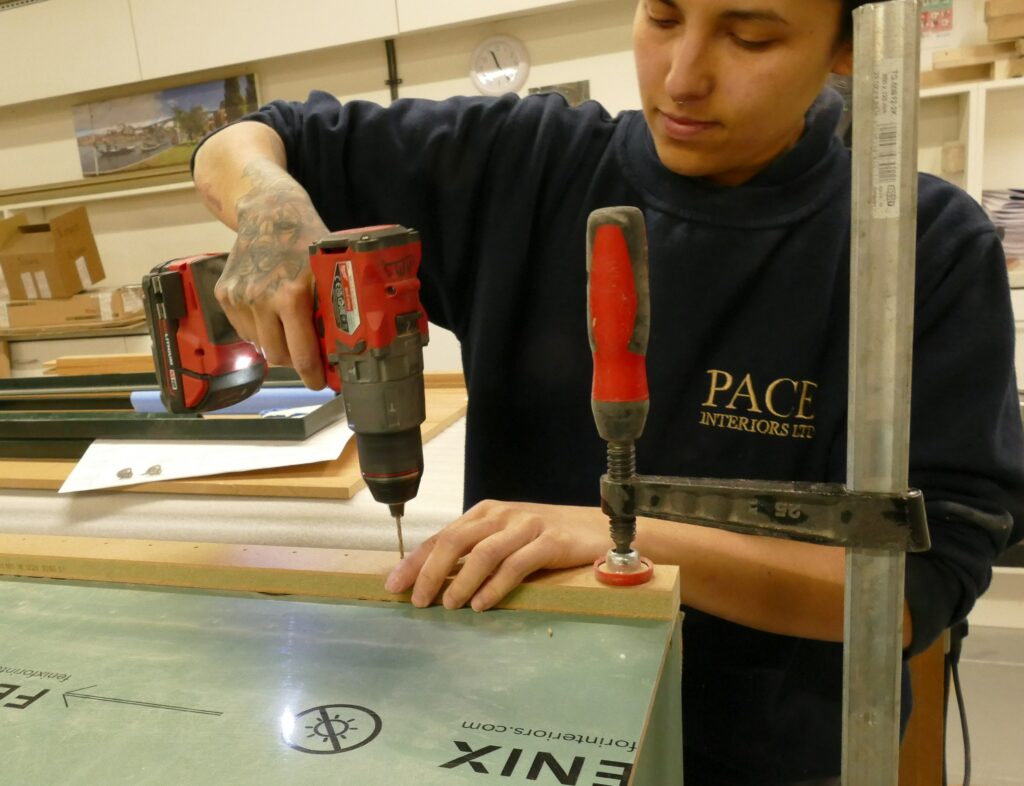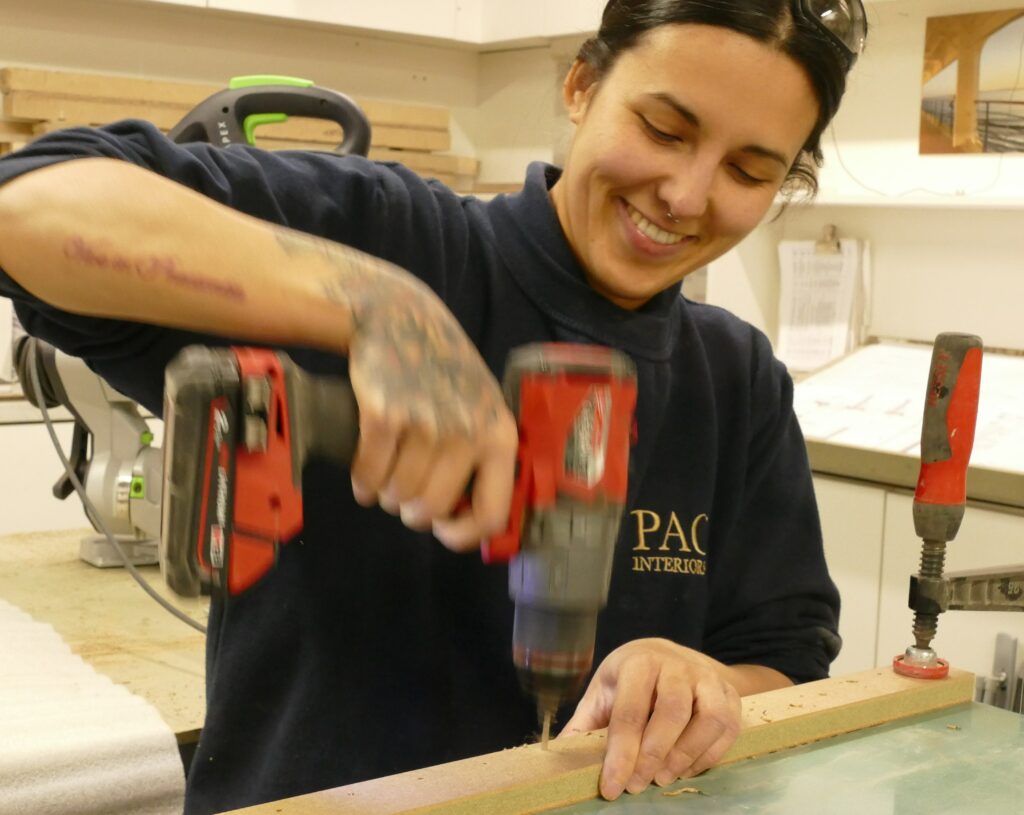We at Pace Interiors are an equal opportunities employer who strives to improve opportunities for all. To help in our mission, we have spoken to our female colleagues to see how they found their way into their role at Pace and why they are in the construction industry, which is notoriously male dominated.
Although many companies are starting to see more women enter the workplace in different sectors, there is still a dramatic difference in the number of women choosing a career path in the construction industry.
This Q&A series will hopefully give a great insight into the women on our team and the work we do at Pace. The first colleague we have spoken to is Amber, who is a joiner and started at Pace Interiors just over a year ago.
What is your role at Pace Interiors, and what led you to work in this career path?
At the start of my career in construction, I did some design work at a company that made sofas and then found a desk job at a large building merchant, but I found that working in an office job was not fulfilling, and I wanted to find something more physical and creative. While I was at the merchants, I started asking if anyone was offering a job as an apprentice or as a fitter’s mate so I could start in a role that would be more fulfilling. I then heard about a small cabinet maker who had an apprentice role available.
This was my first role in joinery as a trainee cabinet maker for a bespoke kitchen designer. I started machining for the first year in the role; this allowed me to learn about the machines while building my knowledge about the very start of the process before moving into joinery. I worked there for over a year and a half, where I learned a lot from the workshop manager and the people around me who had been in the industry for years.
After I left that role, I moved onto a small company that built bespoke front doors, where I got more experience in joinery and found a role, I was enthusiastic about.
These roles led me to Pace Interiors. At the interview, I saw the workspace and the people that worked here, and I felt like this was a great opportunity to gain experience at a larger company that did a wider range of bespoke joinery. Soon after starting, I found there was more freedom in the joinery at Pace compared to one of my previous roles, where a manager or someone with more experience would often micromanage and tell me to do something the same way they do it. Whereas, at Pace, there is always help available, but you are trusted with your work and your process.
Can you share the most interesting project you have been involved in since you started working at Pace Interiors? How were you involved, and what did you learn?
There is not a specific project that stands out to me, as I have been proud of all the work I have done at Pace Interiors. However, I can remember the things I have learned here through projects that I have been involved with. I remember the first time I worked with Corian, a solid surface material, which was the tabletop to a large 6-metre-long worktop. This was an interesting opportunity to gain experience using other materials we use in our projects.
However, in woodworking, I tend to enjoy projects with panelling, fluting, and making cabinet fronts. I was a part of one project that had a lot of panelling around the top of a bathroom. It was interesting and challenging to work out how the panelling was going to fit together and how the fitters were going to install the panelling on site.
What are a few of the biggest obstacles or challenges you have had to overcome while working in a male-dominated industry? Do you embrace those challenges?
I have often found that some members or management in my previous roles had a stiff upper lip attitude towards work and often didn’t offer any support to their employees if they had personal issues. I felt like there was an expectation to compartmentalise work and a home life and to “get on with it” even if you were struggling.
This could be down to the mentality that has been created in the company or the culture in the wider construction industry. However, I have found it has made me learn to stick up for myself, voice my opinion, and feel more confident and comfortable championing myself, especially when I am not supported by the management or my colleagues. Whereas, I have found that at Pace, the mental health support, help, and advice from managers if you need help with your work is really comforting.
Will you continue to work in joinery? Is this a long-term career path for you, or will you explore other sectors?
In the future, with more experience in joinery, I want to run my own workshop and have considered running my own bespoke joinery company.
I have self-doubt about managing a workshop because I always feel like I could learn more, but I look forward to meeting that challenge when I move onto that part of my career.
What do you think organisations can do to enhance their recruiting efforts to attract more women to joinery or construction?
I think getting an understanding of why people are in their industry with conversations like this will help you understand what has drawn them to Pace Interiors or into their career in construction.
Which should help a company like Pace Interiors to support new talent coming into the industry and hopefully increase the number of women that begin a role in joinery.
Another way to increase the number of people and women in construction would be by getting involved in school alumni events and career days so young women can learn about women in labouring jobs or skilled construction jobs. These types of events allow young women to find out about the wider opportunities available to them in their future careers.



